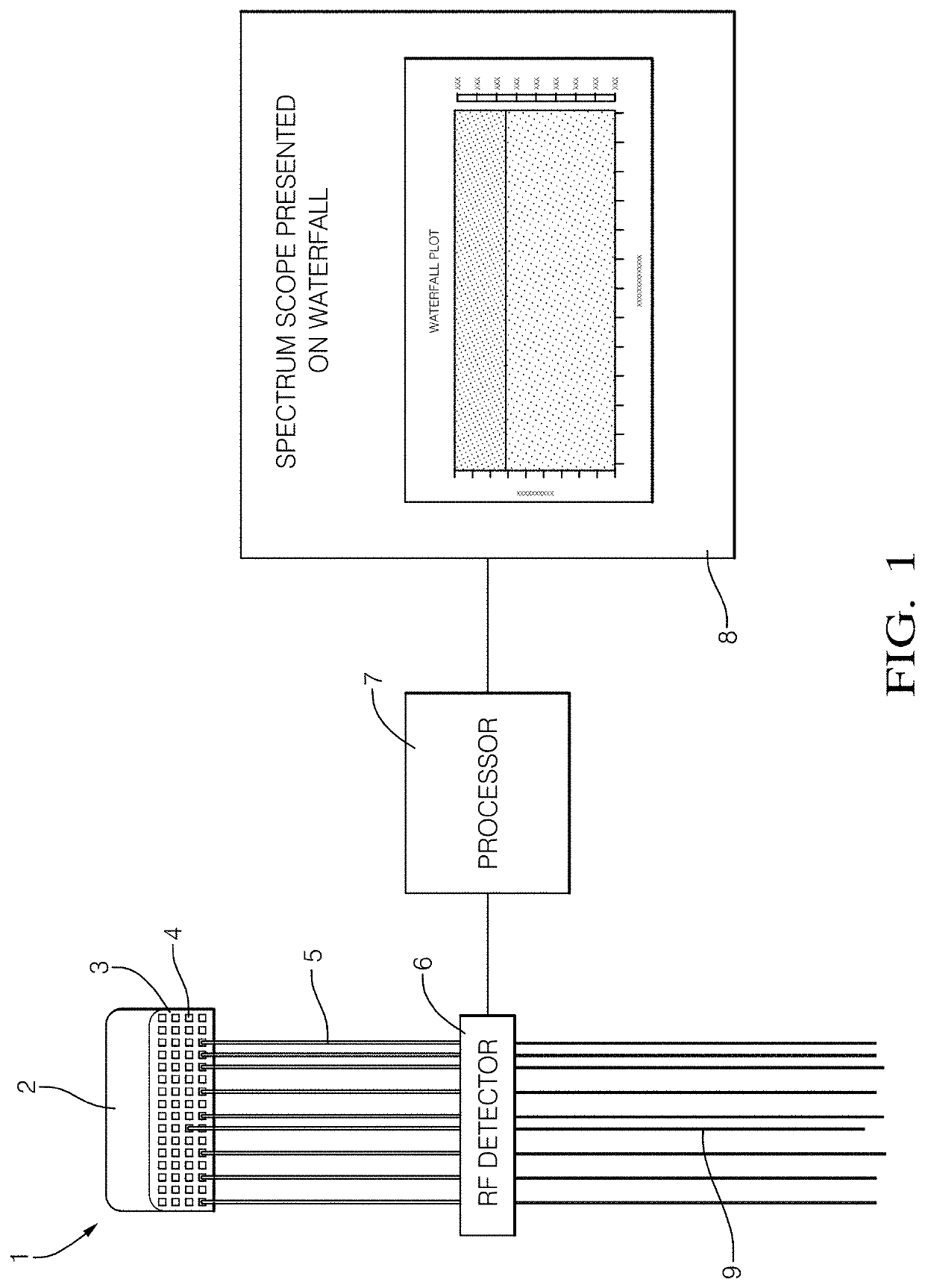Wire Harness Test Device and Method for Verifying Connections when Assembling a Wire Harness
- Summary
- Abstract
- Description
- Claims
- Application Information
AI Technical Summary
Benefits of technology
Problems solved by technology
Method used
Image
Examples
Embodiment Construction
[0025]A schematic diagram of a wiring test device (1) according to an embodiment is shown in FIG. 1. The test device 1 is shown connected to a partially assembled wire harness 9, which comprises a connector housing 3 and a plurality of wires 5. In this illustrative example, the wire harness 9 is shown as a kit type harness, with the proximal ends of the wires 5 connected to individual terminal pins 4 within the terminal array of the connector housing 3, and the distal ends of the wires 5 being free floating. However, it will be understood that one or more of these wires 5 may be terminated with a plug or other connector.
[0026]The connector housing 3 is connected into a corresponding socket provided on the transmitter 2. The socket comprises a plurality of female port terminals which receive the male terminal pins 4 of the connector housing 3 when the connector housing 3 is fitted into the socket. This thereby establishes an electrical connection between the port terminals of the tra...
PUM
 Login to View More
Login to View More Abstract
Description
Claims
Application Information
 Login to View More
Login to View More - R&D
- Intellectual Property
- Life Sciences
- Materials
- Tech Scout
- Unparalleled Data Quality
- Higher Quality Content
- 60% Fewer Hallucinations
Browse by: Latest US Patents, China's latest patents, Technical Efficacy Thesaurus, Application Domain, Technology Topic, Popular Technical Reports.
© 2025 PatSnap. All rights reserved.Legal|Privacy policy|Modern Slavery Act Transparency Statement|Sitemap|About US| Contact US: help@patsnap.com

